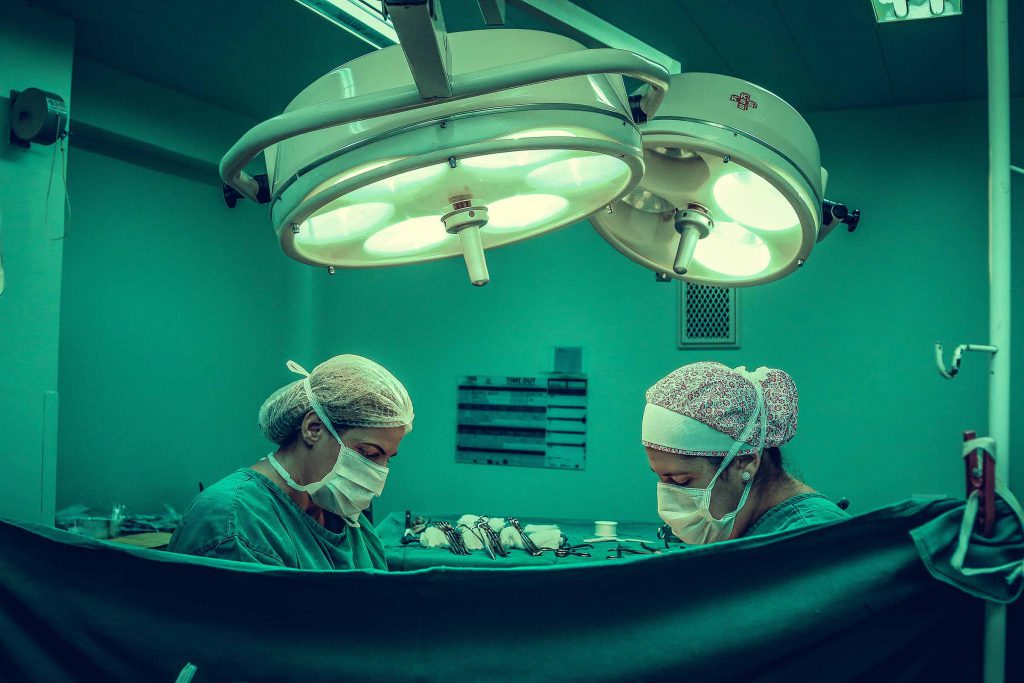As you grow old, you understand the importance of being in shape. You start to miss the healthier joint movements and stability. But now, Your childhood days are gone, and you can almost do 50% of things you like. Despite being old, you may go under the most occurring knee replacement surgery. The surgery itself is a remarkable treatment for unbearable joint pain. But then you must know what you should avoid after knee replacement to keep your new joint healthier.
According to the AAOS, 90% of the total knee replacement cases are still in effect even after 15 years. Which means there is a slight 10% chance of getting unpleasant after surgery. In these cases, either the surgery doesn’t work, or the pain stays within the area. Soon after the surgery, it is necessary to move and function your knee. Otherwise, non-functioning cases deal with consequences of,
- Low blood flow to the target area
- Weakness in muscles
- Improper healing and side effects
- Degeneration

About Knee Replacement – Why Do We Receive this Surgery?
Knee joint pain is The most commonly occurring pain in the Late ’50s. The age where you start to have blurry vision and shaky hands. While the joints in your body also become unstable, and you usually feel pain. Generally, regular joint pain arises in the knee area. Sometimes, it gets worst. Your knee becomes swollen and hard to move. So, the only treatment is to receive knee replacement surgery.
But What is Knee Replacement, and What is it Made Off?
The knee replacement is also known as knee arthroplasty. In other words, it is a surgical procedure to dematerialize the damaged knee. It is due to arthritis where one or more body joint swells up and becomes tender. The surgery requires both metal and Plastic parts to form the cap of your joint bones. The surgeon attaches the parts to both bone ends. Subsequently, it becomes your new knee joint with a kneecap.
After the whole process, physicians assist you in going back to normal. Further, surgeons will instruct what should you do and what should you avoid after knee replacement. So, go easy with your knee replacement surgery.
How Long It Takes to Recover from Knee Replacement Surgery?
The surgery can take up to 2 hours, depending on the intensity of tenderness in bones. After six weeks, the doctor instructs moving along the walking frame or crutches. He also instructs what should you avoid after knee replacement. The set of instructions involves the help of physicians or nurses.
The swelling and pain after surgery can remain along the further three months of surgery. The bones still take time to go along with the replacement pieces. Hence, the whole process can take 4-5 months on a routine knee replacement. Yet, in some instances of legs, it may go longer than usual and about a year.

What Can Cause Pain After Knee Replacement Surgery?
Unsteadiness of Implant
After the surgery, the often reason for pain is the unsteadiness of the implant. The pieces attached takes more time to adjust with bones. Which is why this is known to be the leading cause of pain right after surgery.
Besides, the pain can last up to years or decades.
Inflammation or Infection
Another concern after the knee replacement is the inflammation or infection around the area. The persistent pain after surgery can make it likely to develop sepsis. So the infection over the knee implant area can cause some severe problems. Your knee swells and becomes inflamed.
The pain is worse and causes stiffness over your muscles. Thus, it causes the wound drainage and redness all over the knee.
Kneecap Issues
Kneecap issues are yet another cause of pain after knee replacement. The new material made kneecap needs more attentiveness when you move. A slight force can cause the kneecap to move its place. The pain usually arises when there is pressure on your knee.
Sometimes, when you perform routine activities, you ignore the sensitiveness of kneecap. You apply specific forces as you walk down a stair or get up from the chair. Hence, you end up getting pain over the knee.
Alignment
The alignment of the implant is one of the reasons that cause pain. The proper function of the knee depends on the new implant. Despite brand and quality, the most crucial concern is how the implant is put in. If its well, it can go years without causing pain.
However, poor alignments cannot function well. So, you may end up getting worse even after surgery.
What Should You Avoid After Knee Replacement?
After every surgery, you are advised to take special care of the target area. The same case applies to knee replacement surgery. Once you get the surgery, you need to acknowledge what you should avoid after knee replacement.
It is critical to apply force on your knee in the first few months. But then, you also need to perform the routine activities. See how you can improve your knee while doing routine tasks.
What to Avoid When Sitting?
The aftermaths of a knee replacement can show up to 3 to 4 months. It is essential to know what you should do after knee replacement. When you are sitting, you must
- Sit on a chair and have a straight back.
- Don’t put pressure on your knee while sitting on the edge.
- Keep your position changing in 45 – 60 minutes.
- Keep your knee and toes pointed straight.
- Your knee should be stretched out.
- You should always bend the knee as your instructor-guided you to.
- Avoid sitting on stools and sofas.
- Avoid low-range and with no back support chairs.
While getting up, you should not stand quickly. Slowly move forward on edge. Take the support of your armrest on chairs or crutches. Breathe and stand up, step by step.
What to Avoid When Walking?
When walking, you must avoid taking significant steps. Take small steps during turning and amble by taking your time. Also
- Stretch your knees while standing.
- Use your crutches or walker. You can also use a cane if your provider suggests you.
- Put a small amount of weight on your knees, as your provider recommends.
- Avoid wearing flipflops and Try wearing shoes with nonskid soles.
- Try to keep your toes point straight ahead.
- Walk slowly on wet surfaces.
There will be times when You may want to hurry and catch up to something. You also know that you can walk quickly with your crutches or walking frame. Besides, it is also critical for your knee health. So, Avoid these hassles and walk slow.

What to Avoid When Using Stairs?
When using stairs, one should avoid long trips on the stairs. Long jumps can result in twisting your knee. Avoid it. Also, Take extreme self-care for at least two or three months of surgery. Moreover,
- When going up, take the first step with your leg, which did not go through surgery.
- Take the first step with the leg that went through surgery while going down.
- Take one step at a time.
- Use handrails or holders for support.
Do not ever push yourself opposite to handrail. You may end up tripping over stairs. The result is visible. A dislocated kneecap and what not problems that can become your worst nightmare. Therefore, always use support.
What to Avoid When Lying Down?
Carrying on with routine tasks can be hustle after surgery. Despite knowing what you avoid after knee replacement, you must put extra attention toward your knee. So, when you are lying down,
- You should lie straight on your back.
- Do your knee exercise while lying down.
- Avoid placing a pillow behind your knee.
- Keep your knee straight while resting.
- Also, keep your knee straight to raise or elevate it.
Never jerk your knee while lying down. If you want to get up, use your arms to elevate your body. Don’t push any extraordinary pressure on your leg.
What to Avoid When Changing Clothes?
When changing clothes or getting dressed, you must avoid rapidness. Take your time and manage a stable position.
On other hands, you when you change your pants you must,
- Avoid changing your pants while standing
- Sit down and get stable on a chair or on the bed edge to be more stable.
- Use Reacher arm device to avoid bending.
- Put the pants on the affected leg side first.
- Use aid for putting socks.
- Use elastic laced shoes or slippers.
When undressing, you must remove clothes from the affected side first. This way, you can carry on the routine tasks without bending too much.
Things You Should Avoid after Knee Replacement
Regardless of the routine tasks, you must always pay attention to your activities. Extra force on the knee can displace your cap. Always Keep in mind what you should avoid after knee replacement. Take Note of the below-mentioned activities that you must not do. So that you can always have a happy life even after surgery. Well, You should also Avoid,
- Playing forceful sports like football.
- Doing Gymnastics and Gym activities
- Running down the streets.
- Standing too much.
- Bending or twisting your knee.
- Jerking the operated leg.
- Carrying extra load.
Instead, you can always do activities that require less force. If you love to play sports, you can always go to low-impact sports. Let’s see below what else you can do after knee replacement. You can always,
- Hike
- Do gardening.
- Play golf and table tennis.
- Carry grocery bags and stuff, not more than 9 Kg’s (20 lbs.)
- Always walk with small steps while you jog.
See, taking care of yourself can be handy with acknowledging what you should avoid after knee replacement. Hence, follow the guidelines to avoid the general problems after knee replacement.
Scoop Inside Takeaway
Knee replacement surgery is the only treatment for knee problems. So, it is necessary to take special care of your routine activities after surgery. Since putting significant force and pressure onto your knee can result in pain.
To evade the far-reaching consequences, you must know what you should avoid after knee replacement.
